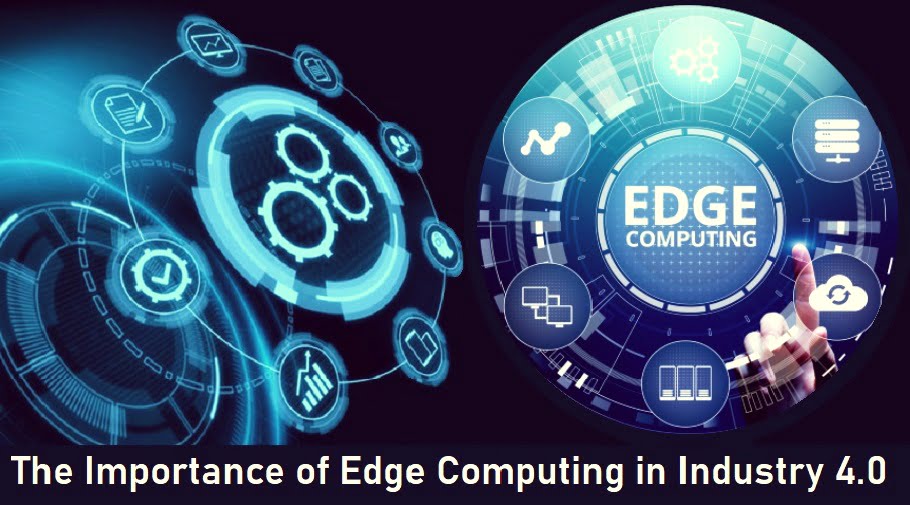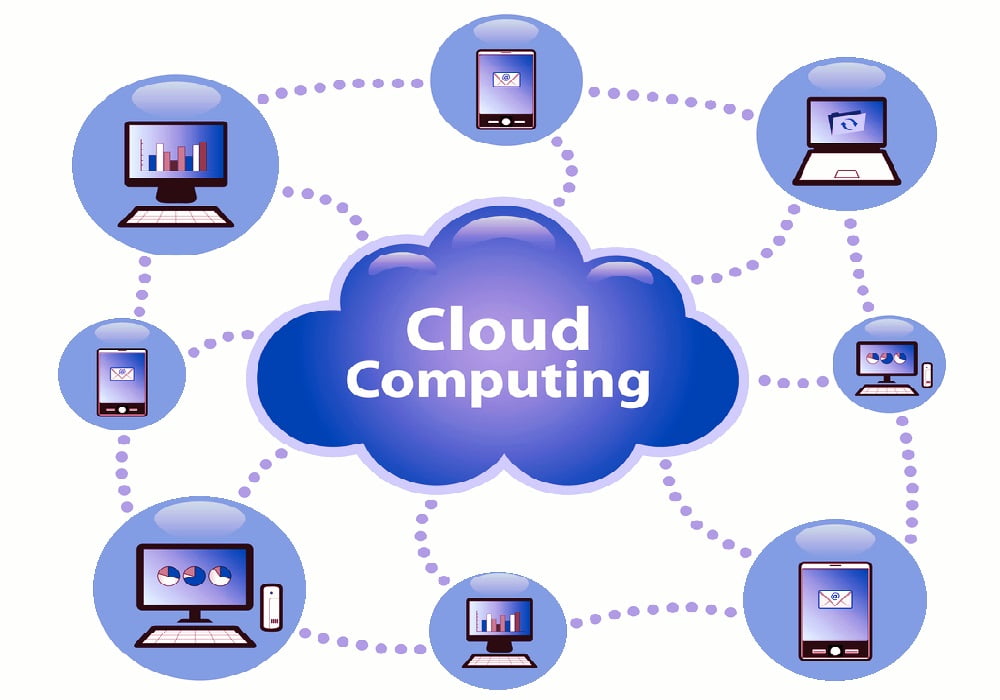Edge computing is complementary to the cloud computing architecture. Edge computing has become an integral part of Industry 4.0 (the Fourth Industrial Revolution). Let’s see why Edge Computing is important for the success of Industry 4.0.

Why Edge Computing Is Important for the Success of Industry 4.0?
Edge computing is a distributed computing model that optimizes Internet devices and web applications and brings computation and data storage closer to data sources such as IoT devices or local edge servers.
Edge computing is a form of computing consisting of micro-data centers that are installed at the edge of a network, allowing the processing to be efficient locally and close to the source.
In Edge Computing, data is downloaded or processed in unconventional data centers, closer to the end-user, in terms of geographical and network proximity. This makes it easy to deliver latency and performance levels that are not possible with the cloud alone.
The edge computing market is experiencing significant growth, driven by the increasing adoption of IoT and the rollout of 5G technology. In 2023, the global edge computing market was valued at approximately USD 16.45 billion and is projected to grow at a compound annual growth rate (CAGR) of 36.9% from 2024 to 2030.
The market is expected to reach USD 32.19 billion by 2029, growing at a CAGR of 15.60% during the forecast period.
Key players in the market, including Cisco, HPE, and Dell, are continuously innovating to develop robust edge computing solutions that can operate in diverse and challenging environments.
Edge Computing is, therefore, an extension of cloud computing, and together they make up one of the pillars of Industry 4.0.
Industry 4.0 (the Fourth Industrial Revolution) broadly refers to the implementation of a variety of ongoing technological advancements and practices to boost production rate, reduce manufacturing costs, increase speed, efficiency, accuracy, and precision, simplify communication and responsiveness between automated machines, and achieve faster manufacturing and productivity goals.
Technological advancements and practices implemented by businesses and organizations globally for industrial automation include artificial intelligence (AI) and machine learning (ML), big data analytics, edge computing, Internet of Things (IoT), 5G cellular technology, 3D printing and smart sensors, among other advanced technologies.
Industrial edge computing describes the integration of advanced edge technologies into modern data-driven manufacturing and production environments.
When Edge Computing and cloud computing are configured in a complementary way, they combine to provide the process with the specialized expertise that is especially needed in remote locations, where connectivity is limited or non-existent.
The edge computing infrastructure can be hosted by service providers and placed on the spectrum between the device and the hyper-scale cloud. It supports various applications and greatly improves connectivity. In this way, the cloud process is streamlined, obtaining instant processing and analysis, with greater analytical speed.
Edge computing can be the layer of real-time, event-driven integration between your factory data and your business systems. This will help you speed up and automate processes, extracting all the value from digital information.
Read here: 12 Real-Life Edge Computing Use Case Examples
In this article, we will summarize the most relevant benefits of edge computing for the industry and explain how it works in a series of real cases.
Benefits of Edge Computing for the Industry
The great importance of edge computing is increasingly being reflected in more and more industrial use cases. Edge computing works on preventative maintenance, condition-based monitoring, OEE (Overall Equipment Efficiency), vision systems, quality improvement, and more.
Edge computing can also drive more advanced use cases such as the Internet of Things (IoT), artificial intelligence (AI), and machine learning (ML) in the cloud. Intelligent perimeter drives important operations and process improvements.
The most valuable benefits of edge computing in the industry are as follows:
Improve quality in operations:
Edge computing has the ability to integrate optimized data, handle complex data sources and make real-time decisions. It allows the quality of industrial processes to be pushed to a new level. The machines and the plant will be analyzed flexibly and precisely.
Maximize equipment uptime:
Edge computing improves speed, temperature levels, and volume data transfer on a machine and provides real-time information on its status and productivity. If frequent failures or spikes are detected in any of the variables, such as temperature, the supervisor can take preventive measures to avoid downtime.
Provide ultra-low latency:
Edge computing has the ability to provide responses with minimal delay. Low latency greatly increases the benefits of IoT. It is essential for the interconnected system to function properly and to be able to respond critically to any malfunction.
Utilize high bandwidth:
Edge Computing streamlines the data download and analysis process, allowing each data point to process its own information. This reduces storage costs and stress on individual systems, and optimizes the process of browsing and finding the most relevant information.
Increase manufacturing production capacity:
Manufacturing edge computing is reshaping the way companies operate machines and manage their supply chains.
Edge computing reduces the time it takes to set up a site and allows manufacturers to filter data to reduce the amount sent to a central server. This creates more shared-use models where multiple parties can use the same facility. To achieve this, it is necessary to deploy the required network infrastructure, making it possible to run it on an edge computing structure.
Enhance interoperability and flexibility:
Edge computing serves as the gateway between information and operational technologies. The edge computing ability to cohesively process devices removes the barrier to integrating compatible systems and technologies. In addition, constant updates ensure a constant flow of innovations and reduce time to market.
Promote real-time automation:
Edge computing technologies can be combined to eliminate delays in the processing time and communication to enhance real-time industrial automation. This paves the way for the creation of an autonomous, self-operating factory.
Provide the reliability of the data storage:
In edge computing, data requires special encryption mechanisms that are independent of the cloud and travels between different distributed nodes connected via the Internet. Edge computing distributes processing and storage functions around the perimeter. That’s why cyberattacks have no chance of bringing down the entire network. The proximity of computing to the data source ensures robust cybersecurity and reduces data risk.
Edge computing provides persistent data storage and maintains the network architecture of the entire distributed system, so that fault detection and recovery are easily applicable.




Pingback: Top 10 Technology Trends You Need to Know for 2022 – SciTech Society